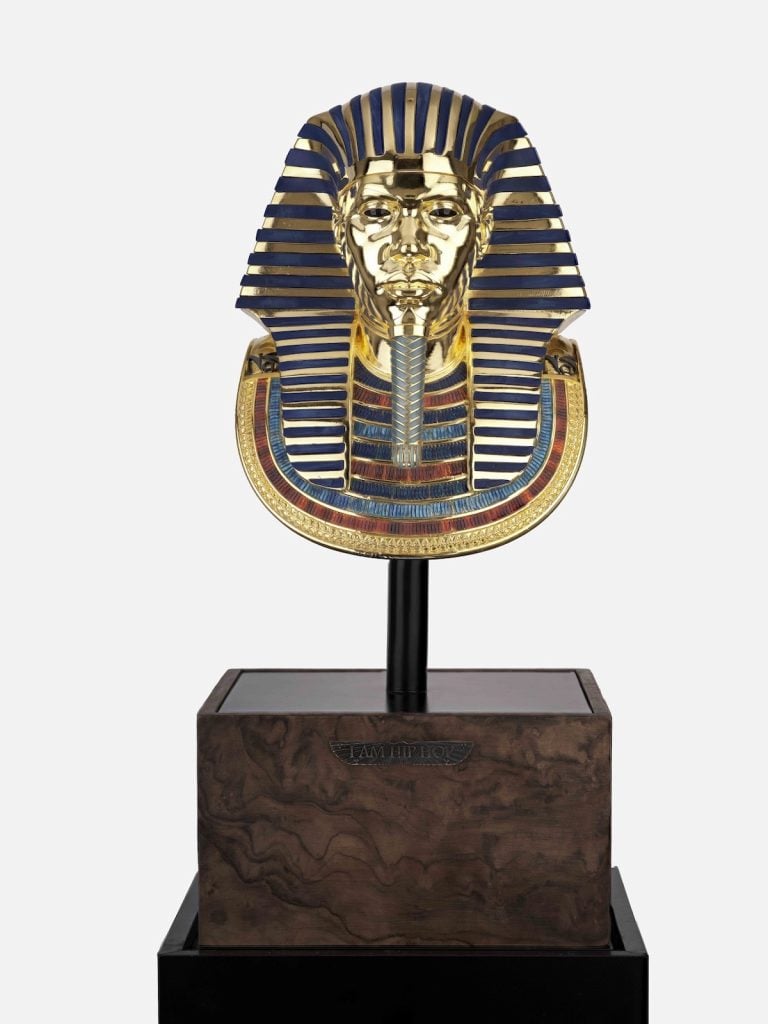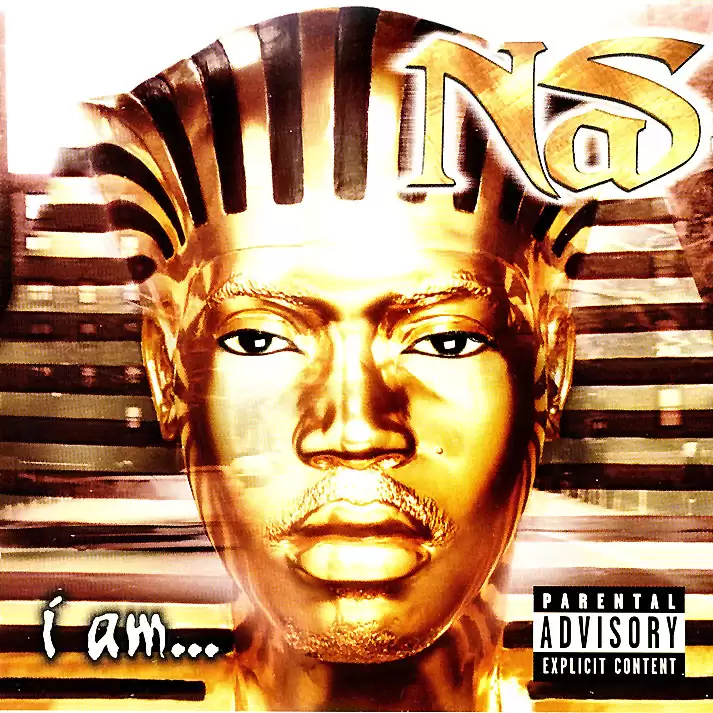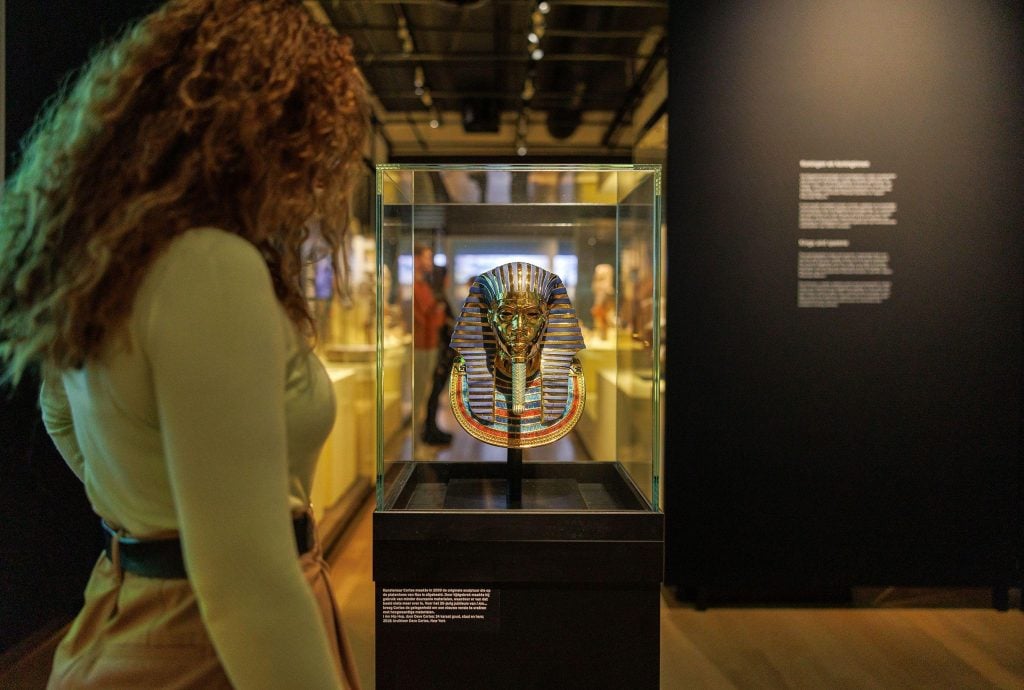Art World
‘The Exhibition Is About Being Inspired’: The Artists Behind the ‘Black King Tut’ That Has Outraged Egyptian Critics Speak Out
David Cortes and Danny Hastings designed the King Tut-style mask of rapper Nas that is causing an uproar.

David Cortes and Danny Hastings designed the King Tut-style mask of rapper Nas that is causing an uproar.

Brian Boucher

“It’s preposterous,” photographer and music video director Danny Hastings told Artnet News on Friday, in reaction to an official inquiry by Egyptian politician Ahmed Bilal al-Burlusy into whether a sculpture depicting King Tut as a Black man violates Egyptian law as an unauthorized copy of an antiquity. The work by the artist artist David Cortes is a new version of one that Hastings originally commissioned for the cover of rapper Nas’s critically acclaimed, double platinum third album, I Am… (1999).
The new sculpture, I Am Hip-Hop (2019), is on view in an exhibition at the National Museum of Antiquities in Leiden, the Netherlands, that explores the ways that Black musicians have taken inspiration from ancient Egyptian culture. “Kemet: Egypt in Hip-Hop, Jazz, Soul and Funk” places Egyptian antiquities from the institution’s collection alongside works by musicians of the African diaspora, such as Beyoncé, Miles Davis, and Rihanna. Its title refers to the name Egyptians gave their own country, “black land,” referring to the rich soil of the Nile River delta.
“At first glance the sculpture may appear as an obvious replica of ancient Egyptian art,” Cortes said in a statement provided to Artnet News. “However, I wanted to be respectful of this great civilization, while also acknowledging this new subculture that speaks of our time.”

Nas, I Am… (1999). The cover art depicted the rapper done up to look like the mask of King Tut. © Columbia Records, 1999.
The museum’s director, Wim Weiland, said that the exhibition “explores music by Black artists who refer to ancient Egypt and Nubia in their work.” He also “acknowledges that the music can be perceived as cultural appropriation.”
The response from some quarters in Egypt has been outrage. “Dutch museum claims Tutankhamun was black,” blared a headline in Egypt Independent. In the article, antiquities expert Abd al-Rahim Rihan calls such a claim an insult to Egyptian civilization. Egypt has even banned a team of museum archaeologists who have been working since 1975 at Egypt’s Saqqara necropolis, an important research site, presumably due to the exhibition, Weijland said.
What race were the ancient Egyptians? That depends on who you ask, and the debate has raged for three centuries. Some say it was an African or Black culture, while many scholars assert that skin colors varied in different regions of the country.
Hastings, of course, says that he and Cortes do not claim that Tutankhamun was Black, but rather that King Tut served as a classic image of royalty that fit the trajectory of Nas’s creative career. His debut album, Illmatic (1994), showed him as a young boy on its cover, while his sophomore effort, It Was Written (1996), featured a photo of him as a man.
“I saw his first and second album, and I thought, ‘A boy, a man… a king! Why don’t we make him into a king like King Tut?” Hastings said. “The original sculpture, made with plaster and gesso, has deteriorated over time. So for the 20th anniversary, we thought, let’s revisit the idea.”
The lushly detailed new version is made of gold, steel, and resin, and features the Tut-like head on a base inscribed with the words of the work’s title: “I am hip-hop.”

David Cortes, I Am Hip Hop (2019). Photo: courtesy of the National Museum of Antiquities, Leiden.
“I’m shocked by the negativity that [the sculpture] is getting,” Hastings added. “The exhibition is about being inspired.”
Hastings has shot over 150 album covers and directed more than 40 music videos, for artists like P. Diddy, the Wu-Tang Clan, Eminem, Jay-Z, and A Tribe Called Quest, in addition to doing branded work for giants like NASCAR, Sprint, and Samsung. Cortes has worked with clients such as DC Comics, Sideshow Toys, Toy Biz, and the National Entertainment Collectibles Association.
“Kemet: Egypt in Hip-Hop, Jazz, Soul and Funk” is on view at the National Museum of Antiquities, Rapenburg 28, 2311 EW Leiden, Netherlands, April 22, 2023–September 3, 2023.
More Trending Stories:
Is Time Travel Real? Here Are 6 Tantalizing Pieces of Evidence From Art History